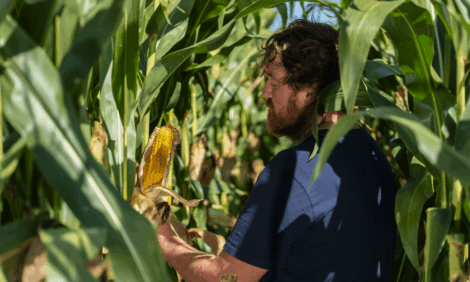



Johne's Disease Requires Vigilant Management Effort to Eradicate
ANALYSIS - Johne's disease is a very robust and resistant bacteria that requires a routine, vigilant management effort to remove it from the herd and keep it out, says Dr. Scott Leibsle, Idaho Deputy State Veterinarian.Johne's disease is caused by the bacteria mycobacterium paratuberculosis. The bacteria is passed typically from one cow to the next through fecal or oral transmission. The bacteria will embed itself in the lining of the small intestine; it causes inflammation of the intestine and prohibits the intestine from absorbing nutrients when cattle eat a regular meal. It can cause wasting of the body, diarrhea and infertility.
Johne's disease is often seen in dairy herds. Infected animal's body condition deteriorates and milk production declines.
"There are two options that are typically used for identification of Johne's. The first test is an ELISA test. That is a blood test that tests an immune system response to an animal that's been exposed to the Johne's bacteria," Dr. Leibsle said. "The other option available is a fecal test. It's a PCR, and it'll identify the DNA of the Johne's organism in the manure that's tested."
“Animals that are infected can shed the organism on and off for the duration of their life,” he said. "I think it's important for any cattle owner, especially dairy producers, to implement a regular testing regimen into their herd. If you don't identify animals that are infected with Johne's early on, they can continue to infect other healthy animals. Unfortunately, there's no effective treatment for the disease and if some herds have a very high rate of Johne's, it's not feasible to cull them all at once."
However, testing and identifying animals is a management tool that should be incorporated into the general herd health plan. If producers test regularly and identify animals as early as possible and remove them from the herd, it can limit the effect the disease can have.
"The goal is to eradicate from the herd, but it's not done very quickly, because Johne's can live in the environment. It's very resistant to heat and cold, so in the winter season, it can remain on the floor of your barn if it's not sterilized and cleaned and removed," he said. "It can continue to infect, even if you've removed the animals that may be infected. It's a difficult organism to deal with and it takes a very significant effort on the part of the veterinarian and the dairy producer to remove the organism."
For more information about cattle diagnostics, click here or connect to the Thermo Fisher Scientific Cattle Resource Center.




